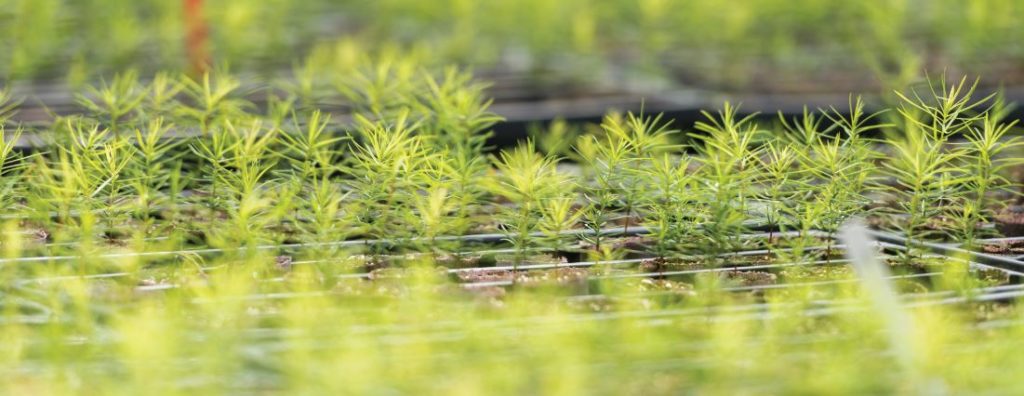The Oregon Society of American Foresters awarded four members of Oregon State University’s College of Forestry with prestigious awards at their 2020 Annual Meeting. Stephen Fitzgerald, Professor and Extension Specialist and Director of OSU Research Forests, received Forester of the Year. Dr. Jim Rivers, Assistant Professor in the College of Forestry, Forest Engineering, Resources and Management Department, received the Research Award. Lauren Grand, Oregon State University Forestry and Natural Resources Extension Agent for Lane County, received the Young Forester Leadership Award. Samuel Zamudio received SAF’s OSU Student Award.
Stephen Fitzgerald, SAF Forester of the Year
This award is presented annually to a member of the Oregon Society of American Foresters who has been recognized by their peers for contributing to both the profession and the public through application of their professional skills to the advancement of forestry in Oregon and through public service that benefits their community or some larger segment of society.
Fitzgerald is a dedicated and experienced forester, manager, and extension specialist. His knowledge of forestry is unique in that he has been with OSU and the Extension Service since the 1980’s in various positions and locations throughout the state. Throughout, he has been able to provide mentorship to OSU forestry undergraduates and graduate students, as well as forestry peers. His research interests include fire ecology, forest health and silviculture and he is now providing guidance through OSU extension to forestland owners affected by the devastating Oregon fires. Fitzgerald has a M.S. in Education and Training, Forest Management from University of Idaho, a B.S. in Forest Biology from the State University of New York, and an AAS from Holyoke Community College.

Dr. Jim Rivers, SAF Research Award
This award is presented in recognition of outstanding achievement in any branch of science leading to advancement in either the science or practice of forestry in Oregon.
Dr. Rivers is lead researcher in early-seral communities and forest management practices effects on multiple species of wildlife and pollinators. These include:
- Marbled Murrelet reproductive success
- Post-fire wildlife demographics and recovery
- Herbicide treatment effects in managed forests
- Biological diversity trends over time
- Animal behavior patterns
- Snags and harvest residue effects
- Habitat linkages
Dr. Rivers has produced over 50 peer-reviewed publications and numerous outreach publications. He presents frequently, including at the SAF National Convention in Portland, at forest health conferences, at managed forest landscapes workshops, at early seral biodiversity and management workshops, and fisheries, wildlife, and ecology symposia. He has conducted invited talks for the Oregon Forest and Industries Council, Pacific Northwest Reforestation Council, and National Council for Air and Stream Improvement. His work is funded by both large and small grants from a range of sources, for both basic and applied research.
He has a Ph.D. from University of California, Santa Barbara in Biology and a M.S. from Kansas State University.
Lauren Grand, Young Forester Leadership Award
The Young Forester Leadership Award recognizes “outstanding leadership by a young forestry professional in the development and promotion of an individual program or project, or for a sustained leadership role benefiting the practice of forestry and the Society of American Foresters.” The award is reserved for people under the age of 40.
Lauren has been the OSU Forestry and Natural Resources Extension Agent for Lane County since 2016. As the OSU Extension Forester for Lane County, Lauren has demonstrated leadership and produced content and tours to benefit the practice of forestry in the county and the state. Lauren has a B.S. in Environmental Science from University of California, Berkeley and a M.S. in Forest Resources from University of Washington.
Samuel Zamudio, SAF OSU Student Award
The award is presented to an OSU forestry student who is a member of the Society of American Foresters, participates regularly in OSU SAF activities, including a leadership role of some kind, represents the OSU SAF Student Chapter at state or national SAF gatherings, and who demonstrates good academic standing, good citizenship and excellence in extracurricular and professional work activities.
Samuel excelled as the OSU SAF 2020 Student Chapter Vice-President and was responsible for coordinating the Career Fair for the College hosted by OSU SAF.
Sam graduated in the spring of 2020 with a B.S. degree.
Congratulations to all of the award recipients!








